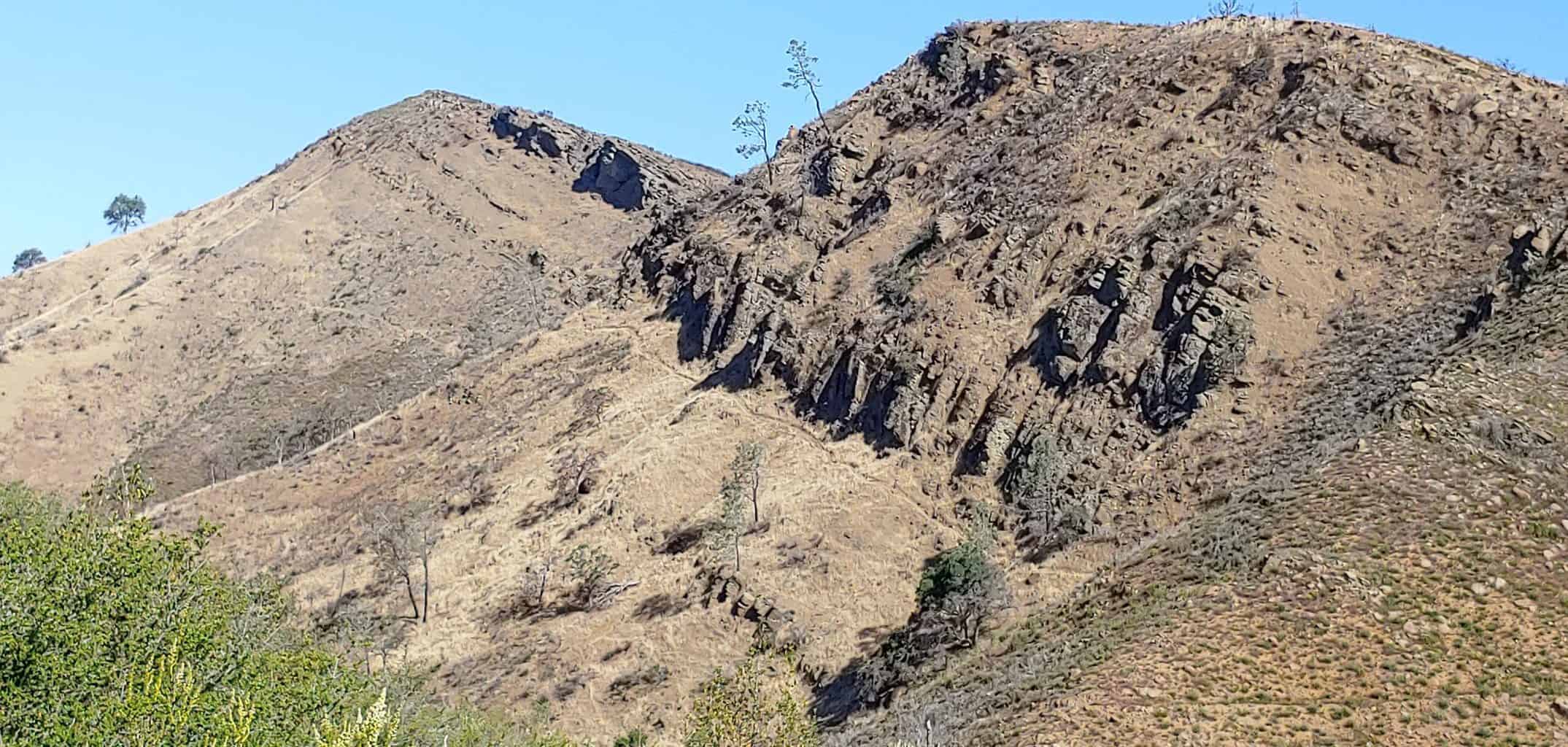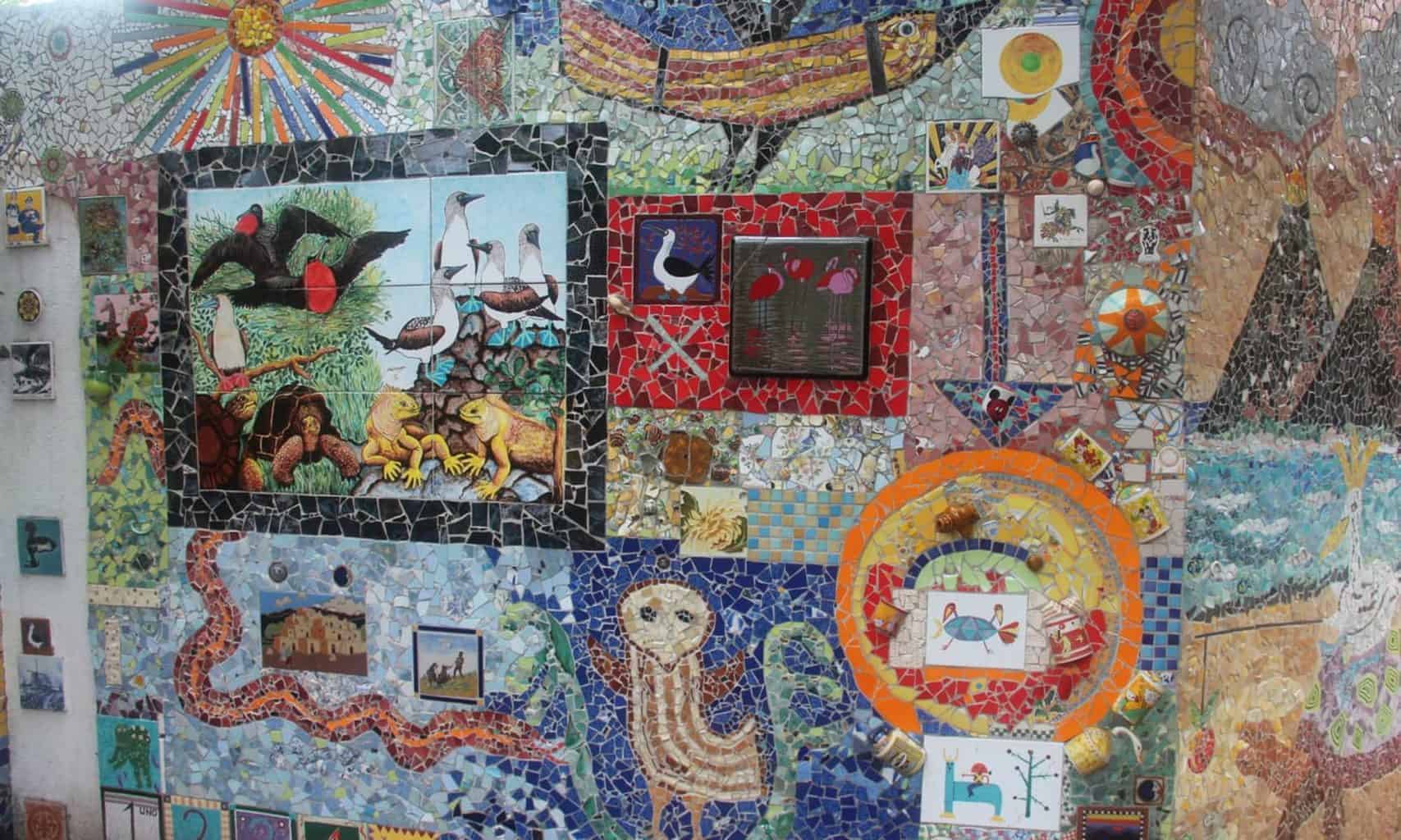Susan Alcorn’s Backpacking & Hiking Tales and Tips, #264. June 2021

For all its material advantage, the sedentary life has left us edgy, unfulfilled. Even after 400 generations in villages and cities, we haven’t forgotten. The open road still softly calls. Carl Sagan
(Thanks, Marcia Powers, for reminding us of this great quotation.)
Contents:
1. Redwood SkyWalk, Eureka, CA
2. Jenner Headland Preserve
3. REI opening up more classes and events
4. Strength training and you
5. Food for thought — healthy hiking
6. No ferry across Edison Lake to Vermilion resort
7. Colour the trails
8. Update on our Nifty Ninety Peaks challenge
9. Dirty Girl Gaiters
Read More
Articles:
#1. “See the Forest from the Trees. Opening planned for June 4, 2021. The Redwood Sky Walk at Sequoia Park Zoo is a self-guided interpretive experience designed to educate, inspire, and delight. Visitors to the Sequoia Park Zoo can visit the Redwood Sky Walk to learn about the rich hidden ecology of California Coastal Redwoods (the world’s tallest trees) from an entirely new perspective. As the longest sky walk in the western United States, the Redwood Sky Walk is just under 1/4 of a mile to the end and back and reaches heights as much as 100ft above the forest floor.
The Redwood Sky Walk is ADA accessible and rises approximately 1/3 of the way up the old and second growth trees in the City of Eureka’s historic Sequoia Park. Admission to the Redwood Sky Walk is included in the price of admission to the Sequoia Park Zoo and no special reservations are required. redwoodskywalk.com.
The Sequoia Park Zoo is a 5-acre facility in Northern California’s Coastal Redwood region and has over 50 species of animals. The Redwood SkyWalk takes guests across a series of suspended bridges and platforms and offers a unique perspective on an old and second growth Coastal Redwood grove. The Sequoia Park Zoo is owned and operated by the City of Eureka, California. Eureka is the largest coastal city between San Francisco and Portland and is “famous for its unique Victorian architecture, one-of-a-kind shops and artisanal businesses, and its rich, authentic history.” woodskywalk.com/grandopening. (Thanks, Amy Racina, for the info.)
#2. Jenner Headlands Preserve. “This preserve offering coastal grasslands and redwood forest, has 14 miles of trails to explore near the Northern California coast, 1.5 miles north of the town of Jenner.
” Hikes range in length from the easy .10 miles roundtrip on Hawk Hill to the strenuous 15-mile “Sea to Sky” loop. Dogs allowed on leash; no mountain bikes or horses on trails. No drinking water. No fees charged. The preserve is managed by The Wildlands Conservancy and Sonoma Land Trust. The 5,630-acre holding is home to “Many rare and endangered species including the Northern Spotted owl, Peregrine Falcon, and Red Tree Vole. It’s more likely you will see deer, bobcat, coyote, but you might even see a mountain lion, black bear, or steelhead trout.” (Amy, thanks again for contributing!)
#3. REI is opening up more classes. Some are outdoors (like kayaking, bicycling), some are still on-line. At last some semblance of normalcy returns! https://www.rei.com/events
#4. Strength training and avoiding injury. Isn’t this what we all want— to get stronger or in better condition for not only a particular hike, but for a fitter and healthier body? The trick is how to achieve this without the depressing setbacks that overuse injuries can cause. Outside Magazine (9/1/2020) Link here. “research suggests that the best way to build muscle is an approach called progressive overload—stress a muscle, let it recover, and then stress it more, gradually building up the stress level over time.” Too much stress/not enough rest = pain, injury, burnout. Too much rest/not enough stress = no gain in strength.

#5. Food for thought: Clay Bonnyman Evans in Junk Food and Big Miles may not add up how thru hikers hope. Evans, journalist and thru-hiker, reports, “CU Boulder researchers’ study suggests that thru-hiking, as on the Pacific Crest Trail, might decrease vascular health.”
Thru-hikers [ed: or any long-distance hikers for that matter] do not always exercise the best health habits and often exist on a “high-calorie, low-quality diet—Snickers bars, ramen noodles, Pop-Tarts, that sort of thing” to reduce the weight of food in their pack and to save preparation time when they reach camp. When they come into town, they may be craving fruit and vegetables, but they often favor restaurants with all-you-can –eat food bars they can go back for more servings, ice cream shops, and breweries. There are, of course, books giving recipes for healthier hiking, but not everyone will take the time to prepare food ahead of time.
“Thomas C. Heinbockel, a professional research assistant and Assistant Research Professor Daniel H. Craighead at the University of Colorado Boulder’s Department of Integrative Physiology have published a study suggesting that a thru-hiking lifestyle may lead to troubling changes in vascular health.”
Susan notes: It’s based on one case study. “The study was based on Heinbockel’s 2019 thru-hike of the Pacific Crest Trail. After finishing his hike, he went back to the lab and his colleague took vascular measures and compared them to tests taken before the hike. They found the changes ‘troubling’.
“Brachial artery flow-mediated dilation, a measure of vascular endothelial function, decreased by more than 25%, they found, and aortic stiffness increased by about 5%.” The researchers did not take additional measurements later, so they admit they don’t know how long the changes lasted. What they do want other hikers to consider is that there may be negative consequences to spending months doing strenuous exercise with eating of high-calorie, low-quality diet.”
“They would like to see further studies, but admit that finding funds for such a study would be difficult. Meanwhile Craighead suggests that hikers focus more on healthier foods and get back to a healthier diet of “fiber, fruits, and vegetables” when they leave the trail. Link here.
While we ponder whether this case study is indicative of a problem, we all should look for ways to improve diet while on the trail. One way to do this is to look at some cookbooks for backpacking food. One very good one is Inga Aksamit’s The Hungry Spork Trail Recipes: Quick Gourmet Meals for the Backcountry.
Speaking of healthy eating while hiking: Just saw that Inga Aksamit, one of the stars of Walk, Hike, Saunter, is administrator of the Facebook group, Healthy Gourmet Backpacking Food. Link here.
#6. Vermilion Valley Resort on the PCT and JMT. “There were mixed signals about this before. Now it is official. Edison ferry won’t run.” Vermilion Valley Resort is a very popular place for people hiking the John Muir or Pacific Crest Trails. It has a campground, cabins, little store and restaurant, and holds packages for resupplying. The resort itself will be open this year, but the ferry that saves a few miles around Lake Edison, will not be running.
“Alrighty – here’s the official word on the ferry / water taxi for the 2021 season…. it will NOT be running. We just went through the 2nd driest winter in the Central Sierra since 1977 and our lake is 100% dependent on snowmelt for replenishment. There is still quite a bit of water in the lake, but being very shallow on both the Mono Creek side and the VVR end, there are too many hazards showing already to safely run the boats.
“We will be operating like we have in past drought years; encouraging hikers coming from the north to drop in over Goodale Pass or (if you don’t want to miss a step of the JMT) hike in along the Mono Creek trail along the lake. We will be offering shuttle service to trailheads to the south (Bear Creek cut-off).
“We know it is a bummer for hikers, but it is also a bummer for water use and hydroelectric for Central California. If we have learned anything over the last 20 years of owning the VVR it is that you roll with the hand you’ve been dealt, and this year we’ve been dealt a low snowpack. We’ll make the best of it, and we’ll still have a great summer in the Sierra. We hope you will too!”
#7. Supporting Access and Diversity: Colour the Trails. Judith Kasiama, who was born in the Democratic Republic of the Congo loved exploring the beauty of her homeland as a child, but when violence began to spill over from Rwanda, her family came to British Columbia. She found when hiking in Vancouver that most of the hiking group were white, just as they are in the U.S. so she founded Colour the Trails. This is a group for BIPOC & allies interested in outdoor activities, including hiking, skiing/snowboarding, kayaking, biking, etc. link here.

#8. Update on the Nifty Ninety Peaks’ challenge. It’s very likely that before the next newsletter come out, Ralph and I and our hiking friends Patricia and Tom will have completed the #NiftyNinetyPeaks’ challenge, which was created by the SF Bay Chapter of the #Sierra Club. #Mount Sizer in Henry Coe State Park, CA, was one of the toughest. It was number 88 for us. My blog about it. Link here.
#9. Dirty Girl Gaiters: I hadn’t thought about Dirty Girl Gaiters for a while, but when recently hiking where there were tons of dry weeds getting caught in my shoes and socks, which means in no time working their way down into my shoes, I remember why I used to wear them on the PCT and other remote places. Dirty Girl Gaiters are designed to be used with trail runners. They have a metal hook on the front of them that fits over the front of your shoelaces and Velcro at the back that attaches to the back of your runners. They weigh only 1.5-2 oz., so worth their minimal weight because your feet will stay cleaner, dirt and weeds will be less likely to work their way into your shoes—and you can make a fashion statement on the trail! https://dirtygirlgaiters.com/
+++
Thank you everyone. Enjoy the wildflowers while you can. Stay well, keep hiking when prudent. I encourage you to send in items of interest to the hiking community. backpack45@yahoo.com
Susan ‘backpack45’ Alcorn
Shepherd Canyon Books, Oakland, CA
Author of Walk, Hike, Saunter: Seasoned Women Share Tales and Trails; Healing Miles: Gifts from the Caminos Norte and Primitivo, Patagonia Chronicle: On Foot in Torres del Paine; We’re in the Mountains Not over the Hill: Tales and Tips from Seasoned Women Backpackers; and Camino Chronicle: Walking to Santiago.
Please note: Hiking and backpacking can be risky endeavors. Always be prepared for emergencies and carry food, water, shelter (warm clothing, etc.), flashlight/headlamp, matches, first aid supplies, and maps. Cell phones don’t always work. Leave word where you are traveling and when you are due back.
To subscribe, unsubscribe, or send a message to this (almost) monthly newsletter, please email Susan at backpack45 “at sign” yahoo.com

Wow. Thanks for all this great information. You are an inspiration. Wish I could keep up with you!
Hi Diane,
Thanks, it’s fun to gather info from here and there. Keeps me on the move.
S